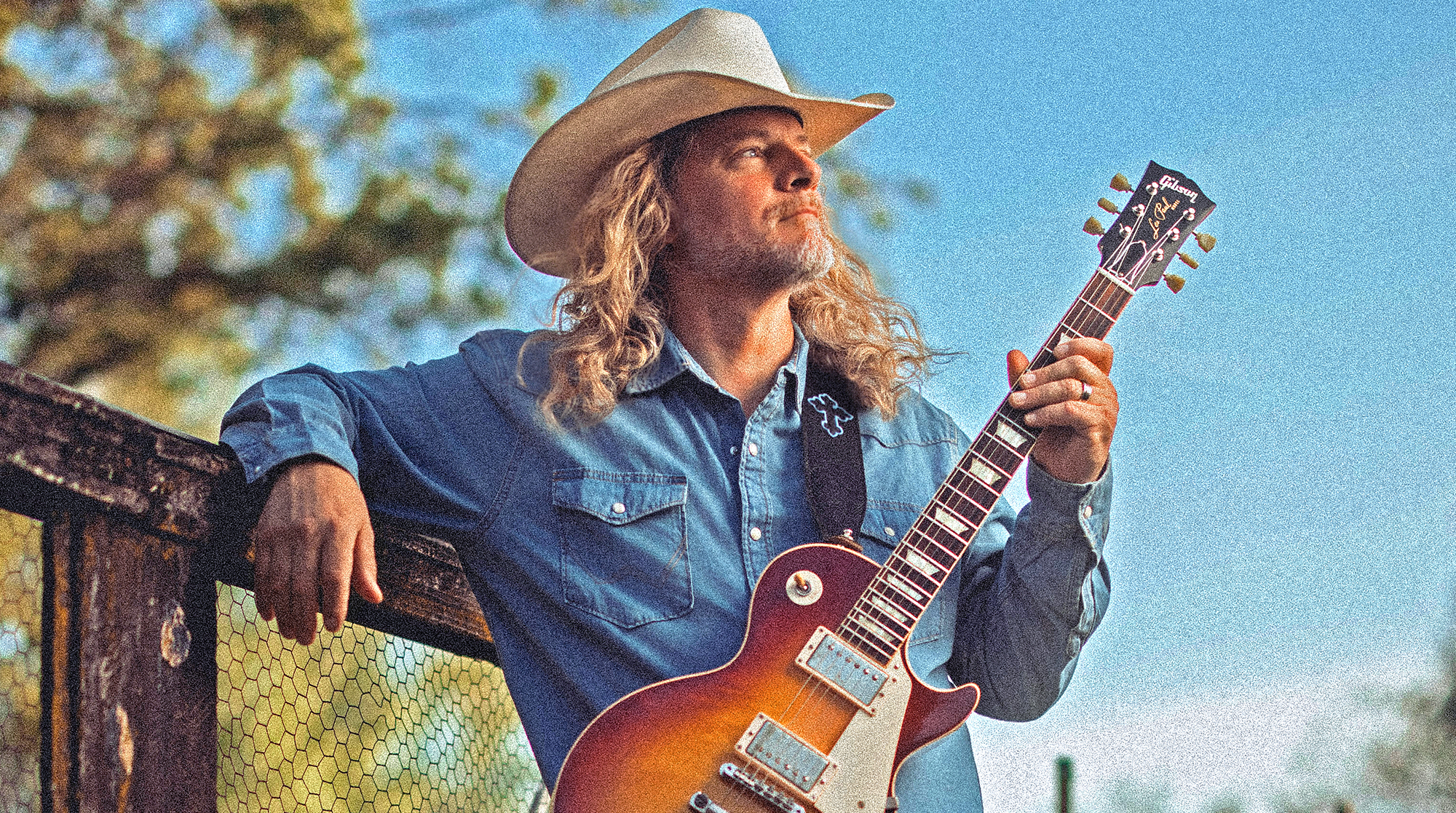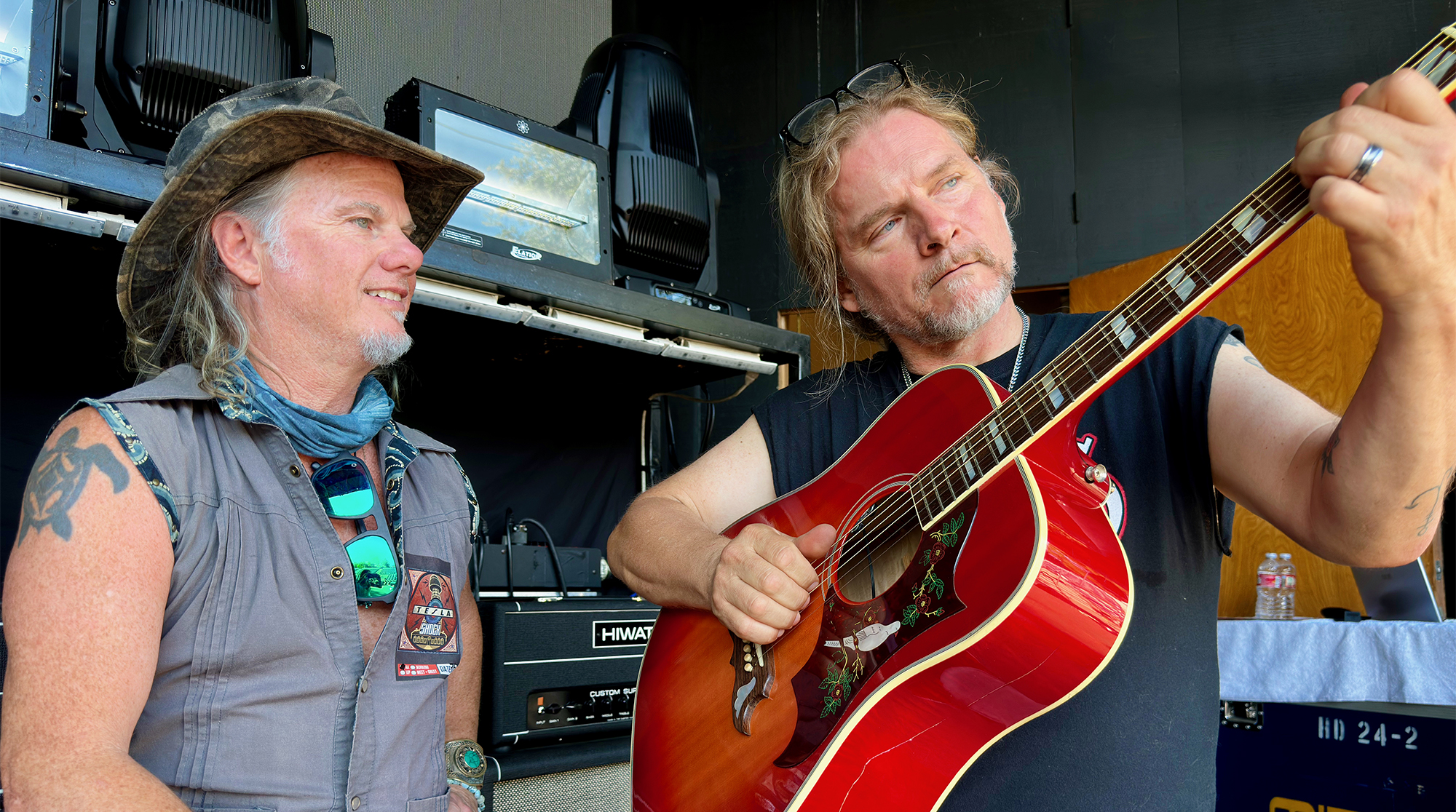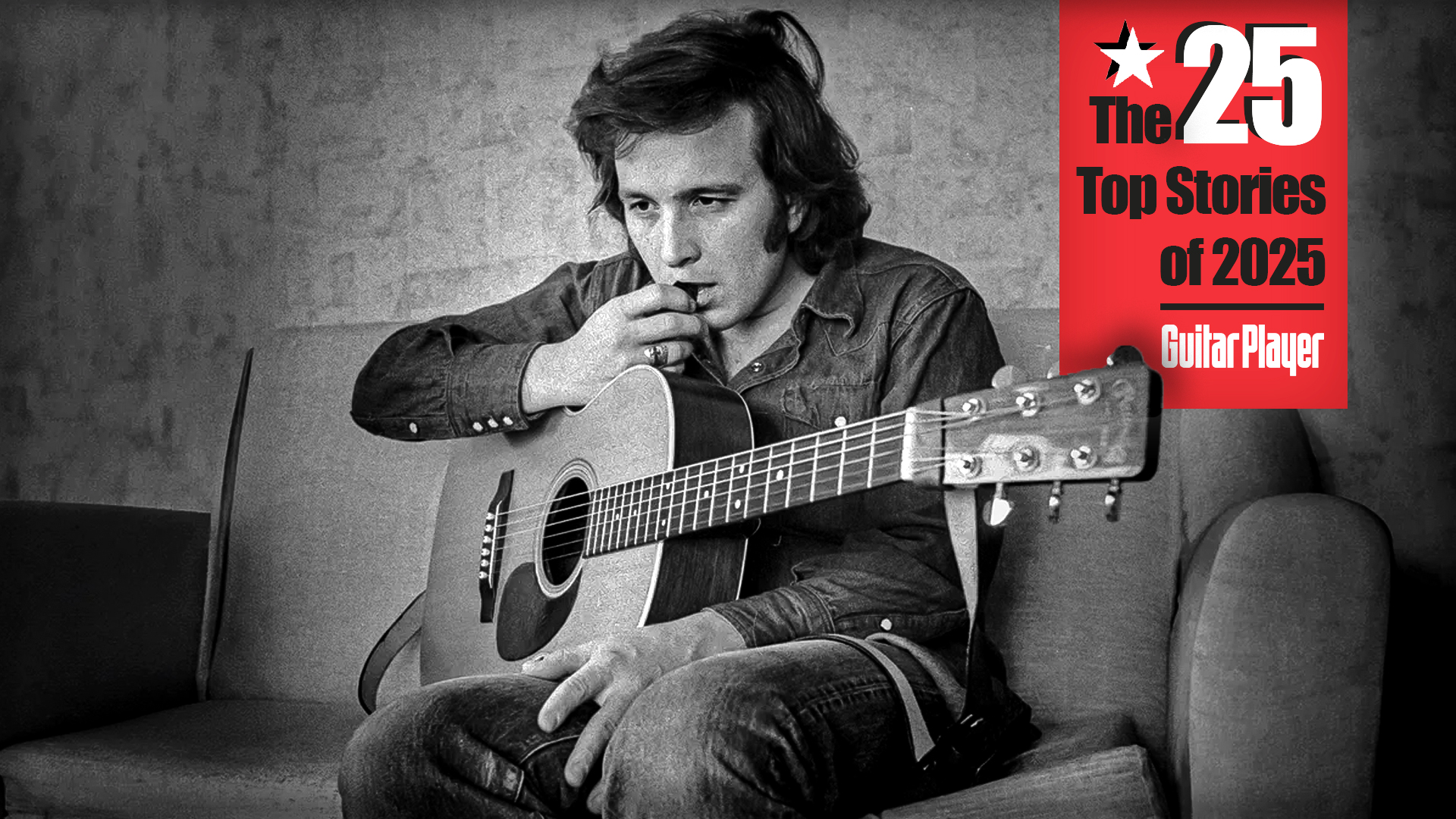"I was recovering from losing a lot of things, including Dickey." After the death of his father-in-law Dickey Betts, Tesla's Frank Hannon rediscovered his love of recording by making an album entirely on his phone
Recovering from loss and chased out of his home by hurricanes, Frank Hannon tracked his new album with just his smartphone and a portable microphone

Frank Hannon is underrated and too often overlooked, yet still creating inspired guitar artistry. The Tesla co-founder helped launch an unplugged revolution, sold millions of records, has a killer signature Gibson “Love” Dove named after their most famous tune, “Love Song,” and continues to deliver fantastic live shows.
Earlier this year, Tesla’s released a video for the beautiful acoustic-guitar duo tune, “From The Heart,” from their 2024 EP, All About Love, while Frank has been preparing an all-guitar instrumental solo album, Reflections (due September 12).
Recorded on his mobile phone, the album is loaded with tracks he wrote to get him through a rough year that saw the death of his father-in-law, Dickey Betts from the Allman Brothers Band, who passed away on April 18, 2024. The first two singles, “Walk in the Rain” and “One More Time,” are full of textural parts and minimalist melodies.
Hannon invited GP backstage before a fabulous Tesla gig, where he performed an impressive balance of delicate acoustic and balls-out electric demonstrations.
What made you decide to record your new solo album on a mobile phone?
I just wanted to play guitar. I did not want to get into a computer looking at Pro Tools sessions, working with a grid, or anything like that. I’ve produced and participated in so many complex recording projects, and I wanted this to be easy.
I saw an ad from Audigo Labs saying how simple it was, so I ordered one. It’s a mobile microphone that comes with a clip and has a magnetic base, so you can attach it to a mic stand or anything metal, and it couples with the cell phone via an app [currently Mac iOS only, but an Android version is in the works]. It really is easy to use.
All the latest guitar news, interviews, lessons, reviews, deals and more, direct to your inbox!
What can you do, and what are its limitations?
You can track and record video at the same time. And you can apply EQ, effects and mix. There are a few different windows for recording, mixing, video and editing. [He shows me the display on his phone for a song in progress.] Right now, I’m in the recording window. You can’t cut and paste tracks and do all that cheating like you can in Pro Tools. You’ve got to play each part all the way through.
Can you record vocal tracks just as easily?
I’ve sung a couple of things with it, but you can’t monitor what you’re hearing in headphones while you’re tracking. It has limitations, but I love having limits. [Audigo records directly to the mic unit and then transfers to the phone afterwards to prevent latency and recommends simply taking one earbud out to hear the current track raw and live while monitoring previous tracks in the other earbud.]
And then you can choose from presets like compression, reverb and echo. There are limitations as to how much programming you can do, but I’m fine with that, too. For example, you just choose a delay type like “slapback,” and it sounds good. You don’t have to waste time adjusting it to the millisecond. The mix window displays a little dot indicating where each instrument is panned across the stereo field. For this song, I’ve recorded an acoustic, doubled it and panned them left and right in stereo.
How did you record them?
I put the Audigo on a mic stand in front of a Gibson J-50 for one track, so it sounds a little more honky compared to my Dove that I used for the other acoustic.
Do you still have your original ’76 Dove that your signature Love Dove model is based on?
No. I sold it to the Hard Rock when Tesla broke up in the ’90s and we were all hurting for cash. We can’t find it anywhere. It’s probably in a Hard Rock Café in India or somewhere overseas. That was the reason for the signature model. Gibson researched the specs, and we went with those, other than the tailpiece being a little different.
[He whips out the acoustic from his backstage rack.] You can tell this is a prototype because we wound up doing a beveled bridge. This guitar was broken. My landscaper made me a stage stand that I set it on so I can go back and forth with the electric, and I smashed the bottom side when I leaned down on it too hard one night. But we glued it back together and it sounds great.
Did you have a vision for the kind of playing you wanted to capture on Reflections?
Starting off, I was just making these little video clips for social media. “Walk in the Rain” was the first one I filmed and recorded with the Audigo, and my wife Christie loved the sound that I was getting on the guitar. She hates it when I play noodly. She’s like, “That makes me nervous. That doesn’t sound good.” Her dad is Dickey Betts, so she's got ears.
But if I play something like the melodic part on “Walk in the Rain” she’ll come in and go, “Yeah, keep doing that.” I've learned that if I play the guitar with more affection and emotion, and if she responds to it, then I know I'm on the right path.
She’s my best judge and critic who has prevented me from doing some stupid things. So I was using the Audigo to record these little videos and my wife was like, “Don't just throw it out there on social media and be done with it. You should put that on a record.” Plus, during this timeframe, man, I was just recovering from losing a lot of things, including Dickey.
How did you handle that?
We moved out to Florida where he lived, and it was an honor to be there for the last three years of his life. We had some great times together. Then our horse got sick from the Florida grass, the hurricanes started coming, and our property got flooded out. The third hurricane was called Milton. It was heading straight for us.
Dickey had already passed away, so we really didn’t have a reason to stay. The property was going to flood, and the horses were going to die. We got the hell out of there and drove across country back home to California. It took us a month, and it was brutal. We got back and the horse was so sick that we had to put her down.
So my wife and I went through a lot of storms, literally and figuratively, but you can play guitar as a healing measure, which is what I was doing when we got home. I told Christie, “I don’t want to do anything. I just want to just play guitar.” She was supportive, and I started playing guitar with more emotion than I’ve probably ever done. I started capturing it on these Audigo recordings, and that turned out to be Reflections.
“Our Father’s Love” was recorded on Valentine’s evening. We stepped outside and saw a huge bright star over our home. With Dickey’s passing and the grace we feel from God, the guitar melody felt very inspired, and it wrote itself that night. I tracked it with a Gibson J-50 and a ’58 Les Paul.
What was the primary location and amplification?
I recorded mostly in my bedroom at home during the holidays using a Fender Deluxe. Then Tesla went out on the road, and I recorded one song in my hotel room, which is called “Sunrise.” Jared James Nichols is a super-positive, fun young guy who always calls me “Dad,” I guess because we both have long hair. He called to tell me that he and his wife were having a baby, who should be born any day now. I was inspired and tapped into those happy emotions with the guitar playing through his signature battery-powered amp [Blackstar FLY3JJN].
In fact, I just recorded a master course with Marty Schwartz in Nashville and the course is going to be called Melodic Expression. The whole theme is listening to your emotions. Like, when I wrote the music for Tesla’s “What You Give” [from 1991’s Psychotic Supper] I was depressed, sitting on the couch just picking those notes, feeling very melancholy. As a guitar player, you can usually write your best songs feeling that kind of emotion and pain.
My lesson is about how to put major and minor chords and melodies together to represent what you’re feeling. If I’m feeling down, I’ll obviously strum some minor chords, but then I might feel hopeful and do a major lift. It’s basic stuff, not technically virtuosic, but I think it’s good stuff that a lot of players overlook.
Anyway, I was on the Monsters of Rock Cruise ship when I recorded the last track, “Into the Blue.” I was playing my guitar and thinking about a tragic incident that happened on that same ship the week prior. Someone had jumped overboard and was never found. So I was looking out at the water feeling sad and I wanted to capture the moment. I whipped out the Audigo, put it in front of my little amp, started recording, and that was it.
Again relying on my wife, I texted an MP3 and she replied, “That sounds beautiful.” So that gave me the confidence to text it to Pat Kraus from Universal Music who owns East Iris Studios in Nashville, which has a mastering lab. He replied, “That's my favorite song you’ve sent so far. It sounds like Jeff Beck.” I was thinking, Wow, that's a compliment. I’ve never been compared to Jeff Beck before. [laughs] And then he went further and said, “When you get back from the ship, catch a flight to Nashville. I'll master it for you, and we'll put it on vinyl.

It sounds good simply coming through the speakers on your phone.
The engineer, who has re-mastered stuff for the Beatles, Miles Davis and John Coltrane, was flipping out that I recorded the whole thing with the Audigo. It’s just guitars and bass, so it's not that difficult, but the sound just glues together in the app.
At one point when I was in the studio with him he mentioned that a mix sounded great but a bit hot and asked if I could bring down the overall level. I whipped out my phone and said, “Sure, man, no problem.” I made a quick adjustment and emailed it to him just like that. It’s all so easy.
And rather lucky, at least as far as the way the whole album came together, wouldn’t you say?
I got very lucky. These things have just been happening organically from the moment I started really being honest and playing guitar from my heart with these songs.
How did the latest Tesla tune, “From the Heart,” come about?
Jeff [Tesla singer Jeff Keith] and I wrote a song called “All About Love” during COVID. It was kind of a nod to our biggest hit from the ’80s, “Love Song” [from 1989’s The Great Radio Controversy]. When I thought about what was missing, I realized that it needed an acoustic intro like “Love Song.”
I played the chords and melody I was working on for the guys, and they encouraged me to go ahead with it. So I did a version in my home studio and showed it to Dave [Tesla guitarist Dave Rude]. Again, it’s just one of those harmonic combinations that reflects how I was feeling at the time.
It's a beautiful little ballad, kind of your “Little Martha.”
I’ll take that as a compliment, thank you. I was feeling pretty good, and it’s in E major like “Little Martha.” If I die tomorrow, I want people to hear me playing from the heart, not a bunch of wanking. I’ve been told by friends, “Play like it’s the last chance you’re going to get,” and that’s where I’m at right now with the guitar.
For more information, visit Frank Hannon's website
Jimmy Leslie is the former editor of Gig magazine and has more than 20 years of experience writing stories and coordinating GP Presents events for Guitar Player including the past decade acting as Frets acoustic editor. He’s worked with myriad guitar greats spanning generations and styles including Carlos Santana, Jack White, Samantha Fish, Leo Kottke, Tommy Emmanuel, Kaki King and Julian Lage. Jimmy has a side hustle serving as soundtrack sensei at the cruising lifestyle publication Latitudes and Attitudes. See Leslie’s many Guitar Player- and Frets-related videos on his YouTube channel, dig his Allman Brothers tribute at allmondbrothers.com, and check out his acoustic/electric modern classic rock artistry at at spirithustler.com. Visit the hub of his many adventures at jimmyleslie.com






